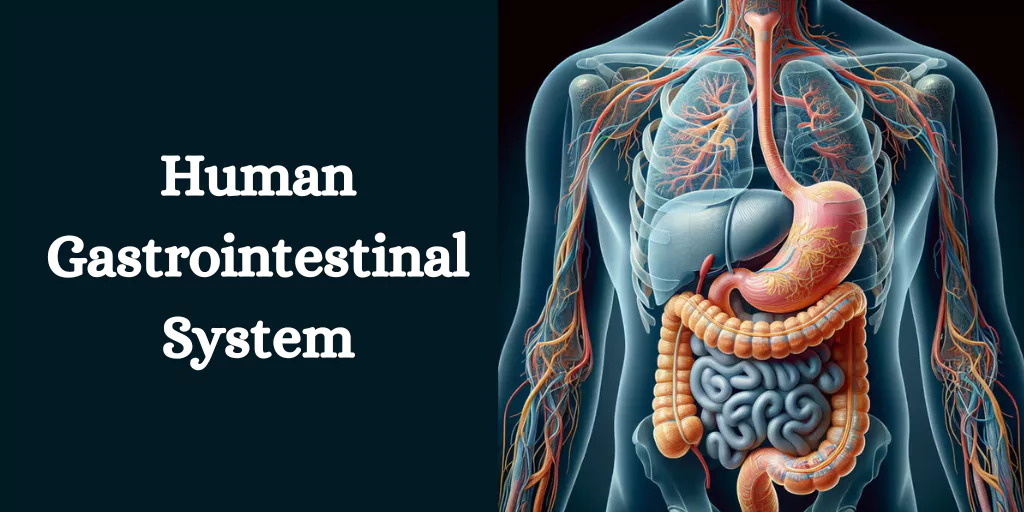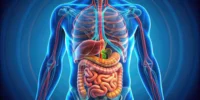The human gastrointestinal system, also known as the digestive system, is responsible for converting the food we eat into nutrients that our bodies utilise for energy, growth, and repair. This complex system comprises numerous organs that work together to ensure that nutrients are absorbed and waste is removed efficiently.
Human Gastric System
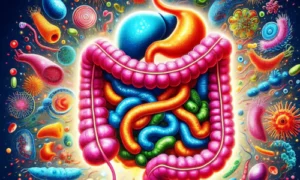
The human gastric system is a vital part of the gastrointestinal (GI) tract, principally referring to the stomach and its function in digesting. The stomach is a muscular, J-shaped structure found in the upper abdomen. It accomplishes both mechanical and chemical digestion of food.
Key Functions of the Gastric System:
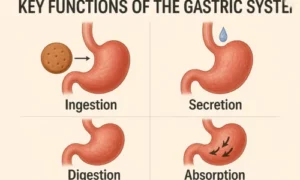
1. Storage of Food:
After swallowing, food enters the stomach, where it is temporarily stored before being passed into the small intestine.
2. Mechanical Digestion:
The stomach muscles churn the food, mixing it thoroughly to form a semi-liquid mixture called chyme.
3. Chemical Digestion:
The stomach secretes gastric juices, including hydrochloric acid (HCl) and digestive enzymes like pepsin, which break down proteins.
4. Defence Mechanism:
The acidic environment of the stomach helps kill bacteria and other pathogens that may enter with food.
5. Regulation of Food Passage:
The pyloric sphincter at the end of the stomach controls the movement of chyme into the small intestine.
Major Organs of the Gastrointestinal System
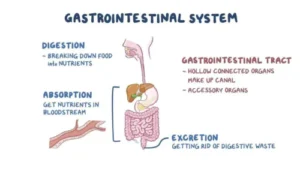
The GI system includes several organs, each playing a specific role:
- Mouth: Begins mechanical and enzymatic digestion.
- Esophagus: Transports food to the stomach via peristaltic movements.
- Stomach: Breaks down food with gastric juices.
- Small Intestine: The Main site for digestion and nutrient absorption.
- Liver and Gallbladder: Produce and store bile, which aids in the digestion of fats.
- Pancreas: Secretes enzymes and bicarbonate into the small intestine.
- Large Intestine: Absorbs water and forms waste (faeces).
- Rectum and Anus: Eliminate undigested waste.
Common Disorders of the Gastrointestinal System
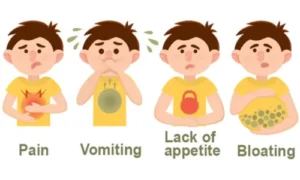
- Gastritis: Inflammation of the stomach lining.
- Acid Reflux (GERD): Stomach acid flows back into the esophagus.
- Ulcers: Sores in the stomach lining caused by H. pylori or NSAIDs.
- Irritable Bowel Syndrome (IBS): Affects the large intestine, causing cramps, bloating, and irregular bowel movements.
- Constipation and Diarrhoea: Disruptions in normal bowel movements.
Tips for a Healthy Gastrointestinal System

- Eat a balanced diet rich in fibre.
- Drink plenty of water.
- Avoid overeating and processed foods.
- Exercise regularly to promote bowel movement.
- Limit alcohol and avoid smoking.
- Manage stress, which can affect gut health.
Conclusion
The human gastrointestinal system is vital for overall health because it ensures the proper breakdown and absorption of food. The gastrointestinal system, particularly the stomach, plays a crucial role in this process by initiating digestion and protecting the body from harmful bacteria. Understanding how this system works enables us to make healthier choices and identify potential digestive disorders early.


